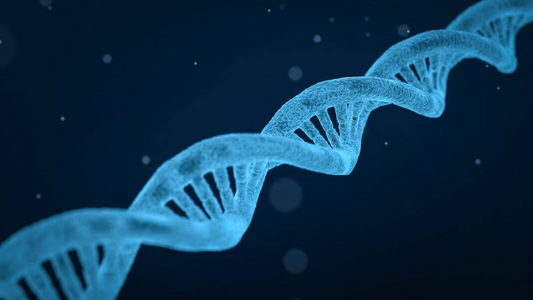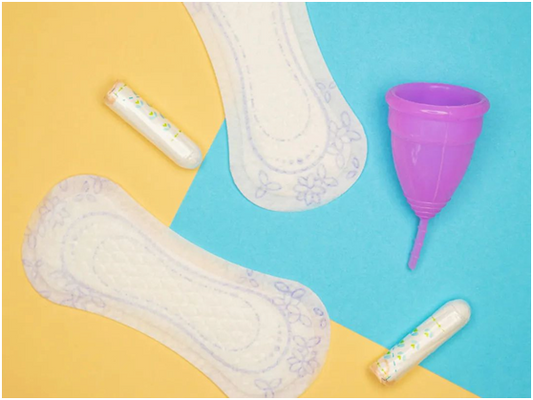How to detox your body the most natural and healthy way.
Spring is a season of renewal, and when it comes to spring cleaning, you might want to do more than polish up your home. Consider giving your body what it’s craving with a spring cleaning that just might uncover a whole new you.
When you hear the word “clean,” a cleansing or detox diet might come to mind, and there have been countless detox trends over the years that significantly limit calories, and often nutrients, from your diet. Many of these unhealthy approaches can cause muscle mass to diminish and your metabolism to slow to a crawl. The good news is that there is a much easier and more effective way to detox.
Instead of following a detox trend, we’re going to discuss how you can spring clean your body the most natural and healthy way.

Cut Out the ‘Junk’
“Junk” food refers to more than candy bars and Big Macs. Ready-to-eat foods like frozen, pre-made meals, deli meats, crackers, granola, breakfast cereals, mac ‘n’ cheese and even canned foods like peaches that sit in a corn syrup-based juice, are all typically processed foods. These items are often modified for taste and appearance by adding flavoring agents, sweeteners, and preservatives. A good rule of thumb is to go beyond the label by reading the ingredient list. If there is a long list of ingredients, many of which have hard-to-pronounce, unfamiliar names, that’s a red flag that it has been highly processed.
All this junk food can contribute to a suboptimal metabolism and inflammatory response in the body. It can even cause you to crave more unhealthy carbs, creating a vicious cycle. Multiple studies, including research published by the National Institutes of Health, have found that a diet of highly processed foods is associated with weight gain. (1)
Instead, try adding more whole foods to your diet. Whole foods are foods in their natural form or as close to it as possible, including complex carbs, like fruits and vegetables, legumes, nuts, and seeds. They have the opposite effect, supporting your good health and a slimmer waistline too.

Watch Out for Hidden Sugars
The World Health Organization recommends getting no more than 10 percent of your calories from added sugars, ideally, six teaspoons or less. While that may sound like a lot, the average American is said to consume over 25 teaspoons of sugar every single day. (2,3)
Eliminating added and processed sugar, or at least reducing it, is an essential part of spring cleaning your body for better health and well-being. That not only means avoiding the obvious, like candy and soda, but foods and beverages with “hidden” sugars. Just because you don’t see the word sugar doesn’t mean it’s not there. Keep an eye out for terms like barley malt, high fructose corn syrup, evaporated cane juice, maltose and dextrose. Choosing whole foods over processed foods will naturally help you to consume less sugar.
While sugary foods can provide a temporary boost of energy, the crash that follows is likely to make you feel worse than you did to begin with. Eating sugar-filled foods and beverages on a regular basis may affect optimal blood sugar levels and metabolic function, as well as your heart and brain health. (4)

Limit or Avoid Alcohol
Toxins aren’t just chemical compounds in processed foods, but substances like alcohol. Alcohol, particularly when not limited (up to two drinks a day for men and one drink per day for women), can really take its toll on the body. It interferes with blood sugar levels, digestion and the nervous system, and can lead to bloating and weight gain. Excessive alcohol can also negatively affect the detoxification process of the liver. This organ is responsible for cleaning and detoxifying the blood. It breaks down and filters out unwanted substances while manufacturing enzymes, proteins and hormones that help support the immune system, and converts nutrients into substances the body can use. When the liver has too much alcohol to handle, normal liver function may be interrupted. (5)
When spring cleaning your body, one crucial step is to limit or cut out alcohol altogether – you might be surprised to find how much better you feel. Replace it with sparkling water, or do something you enjoy instead, like going for a walk, meditating, or relaxing in a hot bath.

Sweat It Out
Did you know that sweating naturally helps to cleanse the body of toxins? That includes chemicals like bisphenol A, better known as BPA, an endocrine disruptor that has been linked to suboptimal blood pressure levels. Sweating can also help remove heavy metals like mercury, lead, cadmium and arsenic from the body. Found in our water, food, industrial emissions, cigarettes and dental amalgams, heavy metals can impact the optimal health of the immune system, the kidneys, brain and heart. (6,7)
That’s why exercise is such an important part of spring cleaning your body. It can help you lose or maintain weight, increase your energy levels, improve sleep patterns and mood, and strengthen the immune system. (8,9)

Remember to Hydrate
Although you’ve probably heard it many times already, staying hydrated is essential for health and wellness. It’s a key part of the detoxification process, and cleaning out your body. Water helps to flush out the toxins, sugars, alcohol, caffeine, additives and much more. It also carries nutrients to the cells, lubricates the joints, flushes the body of waste, aids digestion, keeps the kidneys functioning properly and helps to regulate our metabolism. When your body is sufficiently hydrated, you’ll probably notice that you have higher energy levels and clearer skin too. (10)
Don’t wait until you’re thirsty, aim to sip throughout the day. If drinking plain water all day is tough to swallow, make it more flavorful by adding a squeeze of lemon or lime. The occasional cup of caffeine-free herbal tea (no sweetener added), counts too.
Final Thoughts
Spring cleaning your body is probably much simpler than you initially thought, right? There’s no need to deprive yourself by following a trendy fad diet, it’s all about getting back to the basics, through nutritious food, hydration and plenty of exercise.
QUICK DISCLAIMER
This content is for informational and educational purposes only. It is not intended to provide medical advice or to take the place of medical advice or treatment from a personal physician. Readers of this content are advised to consult their doctors or qualified health professionals regarding specific health questions. Neither the author(s) nor the publisher of this content take responsibility for possible health consequences of any person or persons reading or following the information in this educational content. All readers of this content, especially those taking prescription or over-the-counter medications, should consult their physicians before beginning any nutrition, supplement or lifestyle program.
Sources
1. National Institutes of Health. (2019) Eating highly processed foods linked to weight gain
3. Washington Post. (2015) Where people around the world eat the most sugar and fat
9. Mayo Clinic. (2019) Nutrition and Healthy Eating
10. National Institutes of Health (2010) Water, Hydration and Health




